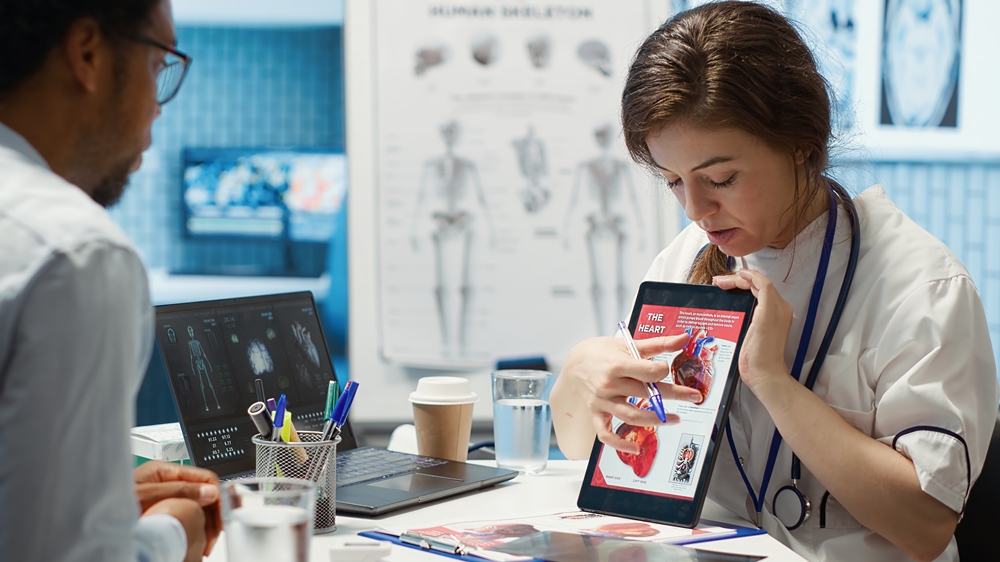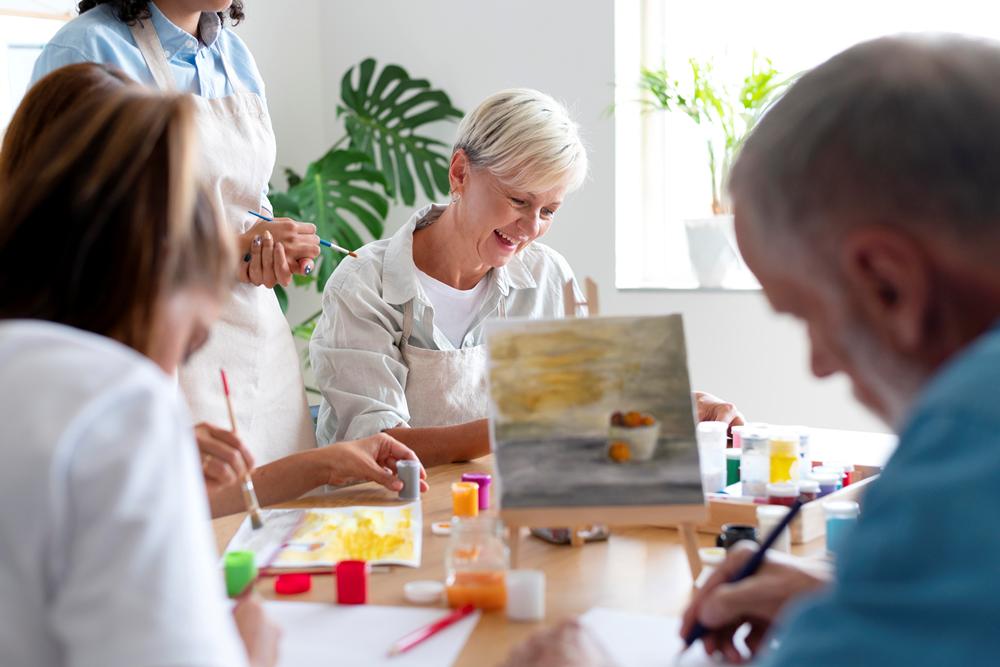News
First set of speakers announced for Rejuvenation Startup Summit 2024

The Forever Healthy Foundation has announced the first set of speakers for its Rejuvenation Startup Summit on 10-11 May 2024.
The networking event brings together startups and members of the longevity venture capital and investor ecosystem who share the common aim to create therapies that extend the healthy human lifespan.
Rejuvenation and longevity biotech is a new, emerging field of medicine. It aims to prevent and reverse the diseases of ageing by addressing their common root cause, the ageing process itself.
In addition to a range of presentations from CEOs of startups in the fields of rejuvenation and longevity, the summit features an all-day startup forum for networking, panel discussions and keynote presentations.
The summit will take place in Berlin and starts at midday on Friday 10 May and finishes on Saturday 11 with an evening party for all attendees.
Speakers at the event will include Michael Greve, founder of the Forever Healthy Foundation; Nina Ruge, science journalist and best-selling author; Hans S. Keirstead, chairman of the Board of Immunis Inc, Dobri Kiprov, co-founder and CSO of Lyfspn, Jens Eckstein, investment partner at Hevolution and, Sergey Jakimov, managing partner at LongeVC.
Other speakers will include spokespeople from the likes of Intervene Immune, Reservoir Neuroscience, Rubedo Life Sciences, Deciduous Therapeutics, Elastrin Therapeutics, LIfT BioSciences, Rejuvenate Biomed, NUS Singapore and Healthy Longevity Clinic
Speakers at the Rejuvenation Startup Summit will include:
- Michael Greve, Founder of the Forever Healthy Foundation
- Nina Ruge, science journalist and best-selling author
- Hans S. Keirstead, Chairman of the Board of Immunis Inc. – developing immune secretome products to change the course of immune-related diseases and ageing
- Dobri Kiprov, Co-founder and CSO of Lyfspn – conducting a pilot study on Plasmapheresis
- Greg Fahy, Co-founder and CSO, and Bobby Brooke, CEO and CTO of Intervene Immune – the thymus regeneration pioneer
- Aaron Friedman, Co-founder and CEO, and Vlad Senatorov, Co-founder and CSO of Reservoir Neuroscience P rejuvenate the blood-brain barrier and restore vascular health
- Marco Quarta, Co-founder and CEO Rubedo Life Sciences – keeps you biologically young by targeting the pathologic cells that drive aging
- Robin Mansukhani, CEO of Deciduous Therapeutics – developing multiple activation approaches to clearing senescent cells via novel immunotherapies
- Matthias Breugelmans, CEO, and Naren Vyavahare, CSO of Elastrin Therapeutics – leveraging a platform to develop therapeutics that render calcified tissue and organs supple again
- Alex Blyth, CEO of LIfT BioSciences – developing the world’s first ‘off-the-shelf’ cell therapy to destroy all solid tumors irrespective of their origin
- Ann Belien, CEO of Rejuvenate Biomed – researches the biology of aging and evaluates the therapeutic potential of synergistic combination drugs
- Mike Kope, and Matthew O’Connor, Co-CEOs of Cyclarity – prevents age-related conditions such as atherosclerosis, heart attack, and stroke by addressing the root cause
- Aaron Cravens, CEO of REVEL – opens up an entirely new field in the treatment of age-related molecular damage by breaking cross-linked collagen fibers
- Matthew Rosen, Executive Vice Chairman of CoRegen – leveraging its gene regulatory platform for the treatment of cancers and other chronic illnesses
- Janine Sengstack, Co-founder and CEO, and Rob Carhill, Co-Founder and President of Junevity – rewinding diseases of age with novel transcription factor targeting medicines
- Reason, CEO and Mourad Topors, CSO of Repair Biotechnologies – developing therapies based on the Cholesterol Degrading Platform
- Alexander Leutner, Managing Director of cellbricks – replicating human tissue at scale
- Alexander Schueller, CEO, and Stephen Helliwell, CSO of cellvie – pioneering Therapeutic Mitochondria Transplantation
- Lou Hawthorne, Founder and CEO of NaNotics – developing a new class of medicine
- Phil Newman, Founder and CEO of Longevity.Technology
- Stephanie Dainow, Executive Director of Lifespan.io
- Lorna Harries, CSO of Senisca – developing senotherapeutic interventions to target the diseases and aesthetic signs of ageing
- Jürgen Reeß, CEO of Mogling Bio – developing approaches to rejuvenate old stem cells of the hematopoietic (blood cell formation) system
- Petr Sramek, Co-founder of the Healthy Longevity Clinic and Managing Partner of LongevityTech.fund
- Brian Kennedy, Prof. NUS Singapore
- Eric Verdin, CEO and president of the Buck Institute for Research on Aging
Investors on stage:
- Jens Eckstein, Investment Partner at Hevolution
- Alex Colville, Co-founder, General Partner at Age1
- Jan Adams, Partner at Apollo Health Ventures
- Sergey Jakimov, Managing Partner at LongeVC
- Marc P. Bernegger, Founding Partner at maximon
- Patrick Burgermeister, Partner at Kizoo Technology Capital
News
Lack of free time could increase dementia risk

A lack of free time could be raising dementia risk, with researchers calling for action on ‘temporal inequity’ to protect brain health.
A new perspective article from the University of New South Wales (UNSW) in Australia argues that ‘time poverty’ – not having enough discretionary time – may limit people’s ability to prevent dementia, particularly among women and lower-income groups.
The researchers say people need sufficient time to support brain health through exercise, sleep, nutrition and social connection.
“Up to 45 per cent of dementia cases worldwide could be prevented if modifiable risk factors were eliminated,” says epidemiologist Susanne Röhr.
“However, many people simply don’t have the discretionary time to exercise, rest properly, eat healthily, or stay socially connected.
“This lack of time – what we call ‘time poverty’ – is a hidden barrier to dementia risk reduction.”
The team estimates that around 10 hours a day are required for brain-care activities such as adequate sleep, healthy eating, physical activity and social interaction.
Yet, the pressures of modern life – from work demands to caring responsibilities – often make this unrealistic.
Women face particular challenges, handling most caregiving duties globally, while lower-income workers often have to work longer or irregular hours, further reducing their free time.
“For many, especially those in disadvantaged or caregiving roles, this simply isn’t achievable under current conditions,” says psychology researcher Simone Reppermund.
“Addressing time poverty is therefore essential if we are serious about preventing dementia.”
The researchers call for broader social measures, including improved childcare, more flexible work arrangements such as four-day work weeks, better public transport and the right to disconnect from work.
They warn that if such steps are not taken, dementia rates will continue to rise, with the greatest impact on disadvantaged populations.
“Brain health policy and research have focused heavily on individual behaviour change,” says neuropsychiatrist Perminder Sachdev.
“But unless people are given the temporal resources to act on these recommendations, we risk leaving behind those who need it most.
“Just as governments act on income inequality, we need to act on temporal inequity.”
The researchers add that dementia-related lifestyle risks – such as loneliness, poor diet, inadequate sleep, lack of exercise and poor oral hygiene – all require time to manage effectively.
They say this highlights a shift from focusing solely on personal choice to recognising the wider structural barriers that stop people from reducing their dementia risk, even when they know what to do.
Research
Research reveals potential ‘two-in-one’ treatment for diabetes and heart disease

A new experimental drug called IC7Fc could help treat both diabetes and heart disease by lowering cholesterol and reducing inflammation in the arteries, researchers have found.
In tests on mice prone to cardiovascular disease, the drug significantly reduced blood fats (triglycerides) and cholesterol while slowing the build-up of fatty deposits in arteries that can cause heart attacks and strokes.
Building on earlier studies showing IC7Fc’s benefits for type 2 diabetes, the international research suggests the treatment may target both metabolic and cardiovascular disease.
The work was led by Leiden University Medical Center in the Netherlands, in collaboration with Monash University and other institutions.
IC7Fc works by reducing atherosclerosis — the narrowing and hardening of arteries caused by fatty plaque build-up.
This process limits blood flow to vital organs and is a major cause of cardiovascular events.
Professor Mark Febbraio from the Monash Institute of Pharmaceutical Sciences said: “Our earlier studies showed IC7Fc could help manage type 2 diabetes, a metabolic disease.
“This new research shows it can also reduce atherosclerosis, meaning it slows the ‘clogging’ of the arteries, where fatty deposits build up and restrict blood flow to the heart,” said
“Heart disease remains the world’s biggest killer, driven largely by atherosclerosis. Even with common treatments that lower blood pressure and cholesterol, many people are still at risk, showing there’s more work to do.”
Earlier studies found IC7Fc reduced appetite and body fat in obese mice.
However, in this new study using lean mice prone to high cholesterol and artery disease, the drug did not affect body weight or food intake.
This suggests IC7Fc’s weight-loss effects may mainly apply to obesity, while its heart-protective benefits — such as reducing cholesterol build-up in arteries — could also help lean individuals.
The findings highlight the drug’s potential as a versatile treatment and the need for further research in humans.
“These results suggest IC7Fc could offer a dual benefit — helping reduce obesity in some, while protecting the heart in others,” Professor Febbraio said.
“It’s an exciting step towards a treatment that targets both metabolic and cardiovascular disease.”
Professor Febbraio has been central to the discovery and long-term research into IC7Fc as a potential treatment for metabolic diseases.
The research team is now planning human trials to test whether the same benefits can be replicated in patients.
News
Creativity helps keep the brain young, study finds

Tango dancers have brains that appear more than seven years younger than their actual age, with creativity linked to slower brain ageing across all art forms, new research has found.
Musicians and visual artists showed brains about five to six years younger, while gamers’ brains appeared around four years younger, according to research examining how creative activities affect brain health.
The more participants practised their art form, the stronger the anti-ageing effect.
“Creativity protects brain areas that are vulnerable to ageing and makes brain communication more efficient,” said Carlos Coronel, postdoctoral researcher at the Latin American Brain Health Institute.
He compared the effect to “building more, larger, and higher-quality roads to communicate between cities within a country.”
Researchers collected data from almost 1,400 people across 13 countries, including expert tango dancers, musicians, visual artists and gamers, and non-experts matched for age, education and gender.
The work, led by the Latin American Brain Health Institute at Universidad Adolfo Ibáñez and Trinity College Dublin, used artificial intelligence “brain clocks” to estimate brain age.
Brain clocks are AI models that estimate how old a brain appears based on scans or patterns of neural activity.
When someone’s predicted brain age is lower than their chronological age, it suggests their brain is ageing more slowly and functioning more efficiently for their years.
The researchers recorded brain activity using magnetoencephalography and electroencephalography — techniques that measure electrical activity in real time.
They then trained computer models to create a brain clock for each participant.
Even short-term creative training produced benefits. Non-experts who trained for 30 hours in the strategy video game StarCraft II showed a reduction in brain age of between two and three years.
The team also used “digital brains” — biophysical computer simulations that replicate real brain activity using mathematical equations — to understand why creativity may protect against ageing.
These models showed that creative activities help key brain areas work better together, especially regions involved in focus and learning that typically age first.
Professor Agustín Ibáñez from Trinity College Dublin said the research “reframes creativity as a biological pathway to brain health and resilience, not only a cultural or psychological phenomenon.”
The findings suggest that creativity keeps connections between brain regions stronger and more flexible, particularly in areas that usually decline with age.
It did not matter which art form participants practised — dancing, painting, music or gaming all showed similar effects.
“By showing that artistic engagement can delay brain ageing, this research helps us reimagine the role of creativity in education, public health, and ageing societies,” the researchers said.
They described creativity as a “scalable, accessible and deeply human mechanism” to sustain cognitive and emotional wellbeing across diverse populations and lifespans.
Unlike many brain health interventions, creative activities also provide enjoyment alongside biological benefits.
“Your next dance step, brush stroke, or musical note might just help your brain stay a little younger,” the researchers concluded.

 News1 month ago
News1 month agoKey change to urine could be early warning sign of dementia, researchers say

 News7 days ago
News7 days agoAmericans score 60 on longevity preparedness index

 News2 months ago
News2 months agoAlmost half of adults with diabetes are undiagnosed, study finds

 News4 weeks ago
News4 weeks agoNew technique can track Alzheimer’s in real time

 Research1 month ago
Research1 month agoChronic insomnia doubles dementia risk, study finds

 Wellness2 weeks ago
Wellness2 weeks agoFamily backs calls for dementia-friendly hospital

 Wellness1 month ago
Wellness1 month agoSimple test can predict risk of severe liver disease

 Wellness7 days ago
Wellness7 days agoUK aims for 92 per cent dementia diagnosis by 2029







































